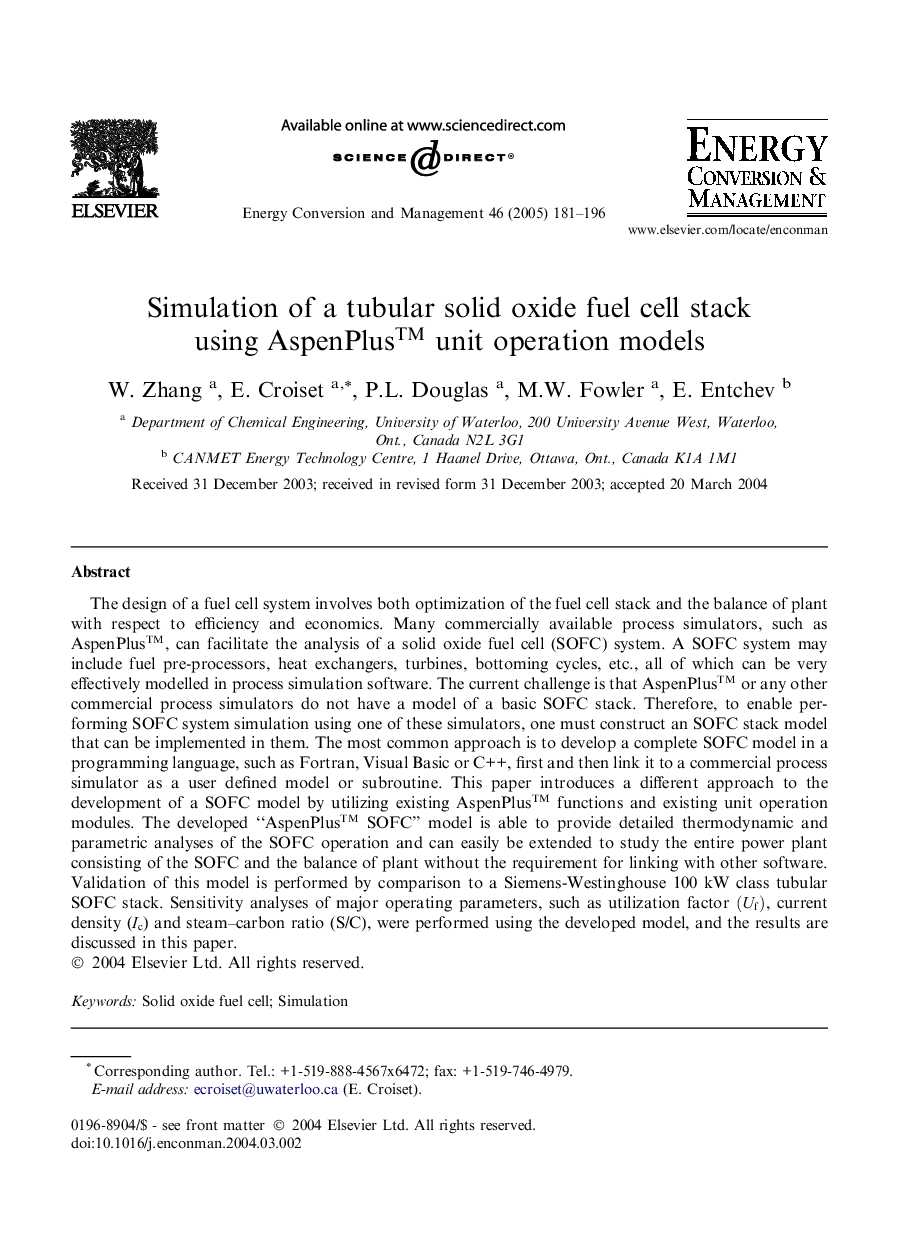| Article ID | Journal | Published Year | Pages | File Type |
|---|---|---|---|---|
| 10415916 | Energy Conversion and Management | 2005 | 16 Pages |
Abstract
The design of a fuel cell system involves both optimization of the fuel cell stack and the balance of plant with respect to efficiency and economics. Many commercially available process simulators, such as AspenPlusTM, can facilitate the analysis of a solid oxide fuel cell (SOFC) system. A SOFC system may include fuel pre-processors, heat exchangers, turbines, bottoming cycles, etc., all of which can be very effectively modelled in process simulation software. The current challenge is that AspenPlusTM or any other commercial process simulators do not have a model of a basic SOFC stack. Therefore, to enable performing SOFC system simulation using one of these simulators, one must construct an SOFC stack model that can be implemented in them. The most common approach is to develop a complete SOFC model in a programming language, such as Fortran, Visual Basic or C++, first and then link it to a commercial process simulator as a user defined model or subroutine. This paper introduces a different approach to the development of a SOFC model by utilizing existing AspenPlusTM functions and existing unit operation modules. The developed “AspenPlusTM SOFC” model is able to provide detailed thermodynamic and parametric analyses of the SOFC operation and can easily be extended to study the entire power plant consisting of the SOFC and the balance of plant without the requirement for linking with other software. Validation of this model is performed by comparison to a Siemens-Westinghouse 100 kW class tubular SOFC stack. Sensitivity analyses of major operating parameters, such as utilization factor (Uf), current density (Ic) and steam-carbon ratio (S/C), were performed using the developed model, and the results are discussed in this paper.
Keywords
Related Topics
Physical Sciences and Engineering
Energy
Energy (General)
Authors
W. Zhang, E. Croiset, P.L. Douglas, M.W. Fowler, E. Entchev,
